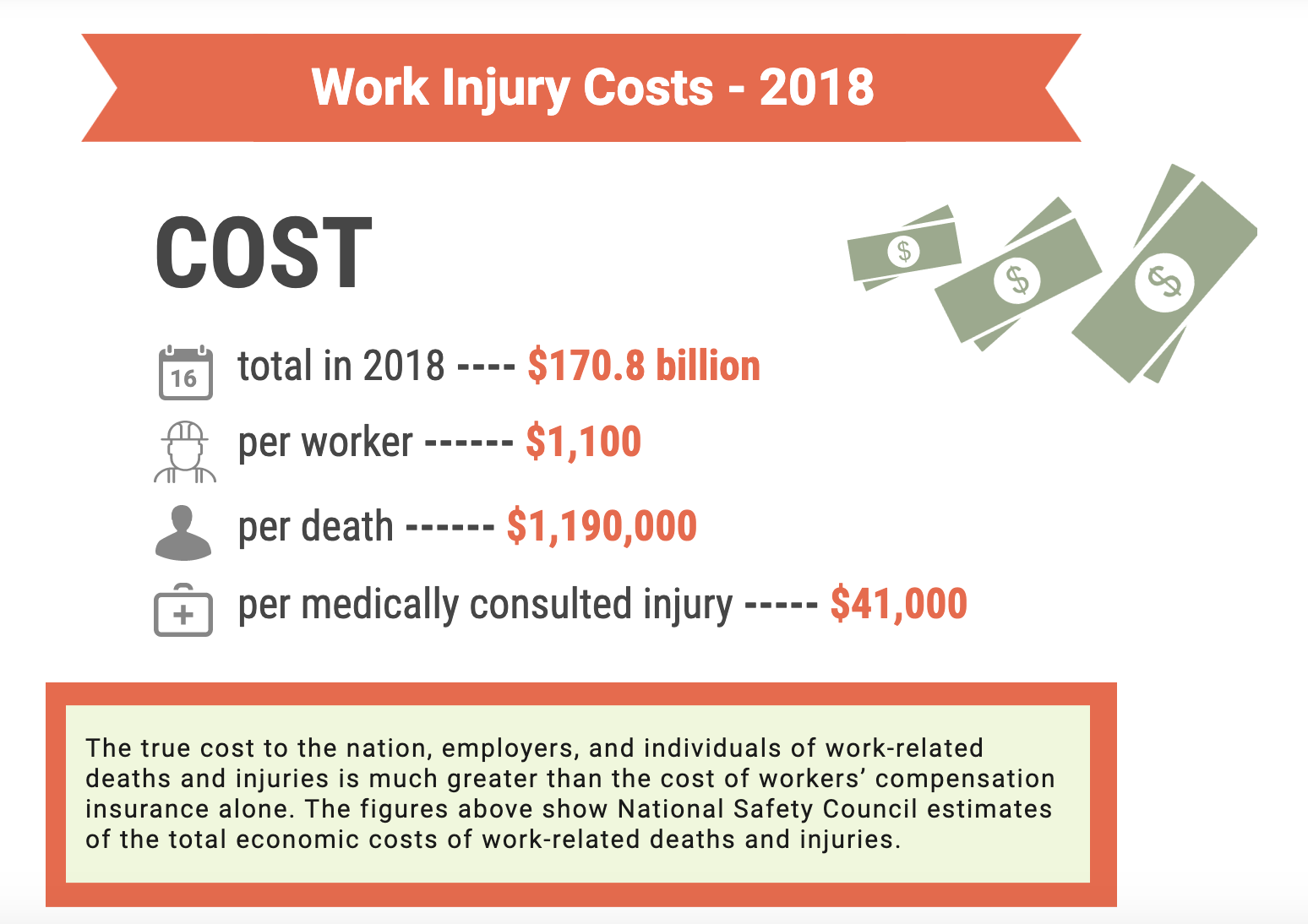Use Case Series: Streamline Near Miss Reporting
Let’s start out with some sobering statistics reported by the U.S. Occupational Safety and Health Administration (OSHA) and the U.S. Bureau of Labor Statistics:
- In 2018, there were 2.8 million lives impacted by workplace incidents that resulted in injury or illness.
- 900,000 of those incidents were so harmful that workers needed days away from work to recuperate.
- Out of all goods-producing industries, the manufacturing industry had the highest rate of incidents resulting in days away from work.
- 14 workers died per day in work-related incidents, which was a 2% increase from the year before.
According to the National Safety Council (NSC), workplace incidents not only impact the individuals involved, but they also have an economic impact on society as well:

Is it acceptable for the work-related fatality rate to increase year over year?
Safety is everyone’s responsibility. And prevention is the best method for combating safety-related workplace incidents or accidents. There are many ways to cultivate a culture of safety. One of the most widely adopted practices for preventing work-related accidents while establishing and maintaining a culture of safety is near miss reporting.
According to the NSC, “a Near Miss is an unplanned event that did not result in injury, illness, or damage – but had the potential to do so. Only a fortunate break in the chain of events prevented an injury, fatality or damage; in other words, a miss that was nonetheless very near.”
The NSC points to faulty processes or management systems as the most common root causes of near misses. When near misses go unreported, accidents are likely to occur.
Simply, reporting a near miss isn’t enough. Each report must be thoroughly investigated in order to identify the root cause. After the root cause is identified, corrective actions must be taken to eliminate the likelihood of injury, damage or loss. Corrective actions can take many different forms including:
- Safety training
- Process changes
- Maintenance
- Procurement of protective equipment and more
To make the most out of any near miss reporting system, you should establish a reporting culture and conduct all investigations in a timely manner and make the entire process simple.
Establish a Reporting Culture
Employees must feel empowered to report any and every risk they identify without fear of punishment. When the stakes are as high as they are, and small mistakes can lead to severe injury or death – a critical eye is key. Encourage workers to make their voices heard.
An easy way to begin cultivating a reporting culture is to enable employees to report a near-miss whenever it happens, no matter where they are. With Parsable, on-demand jobs give frontline workers a quick and easy way to report a near-miss while capturing critical details about the incident, including photos, videos and more.
Conduct All Investigations in a Timely Manner
One of the best ways to encourage workers to speak up is to listen, then act. Every near miss report must be thoroughly investigated within 24-48 hours of the report while memories are fresh. If a corrective action cannot be completed within that time frame, the plan for the corrective action should be made known.
Collaboration is critical to ensuring the root cause of a near miss is appropriately identified. Targeting an incorrect root cause means the corrective action will not be as impactful as it could be, which means the risk of the incident still remains. With collaboration tools embedded in the platform, Parsable streamlines collaboration by helping you make sure the right people are engaged at the right time. Workers have full access to all the relevant details, including parties involved, to ensure the investigation gets done right, every time.
Simplify the Process
Reporting a near miss should be simple and convenient, and the investigation should be transparent and straightforward. Because safety is a cross-functional team effort, there may be many people involved throughout the entire process. Without clear ownership or complete traceability, the process will quickly become complicated.
Parsable simplifies the process by providing a tool that can be used to report, track, and investigate near misses while providing clear ownership and complete traceability for all involved in the process. Visibility and ownership helps promote accountability, which in turn helps strengthen the reporting culture mentioned above.
At Parsable, we believe that safety is everyone’s responsibility. That’s why we’ve built Connected Worker® by Parsable to enable industrial workers to leverage digital tools for a variety of uses — safety included. By focusing on these ideals and by working together with you, we can make work safe and drive change.
Check out the video to see how you can use Parsable to improve your workers’ near miss reporting experience by making the entire process simple and transparent while seamlessly collecting critical data points you can leverage to drive sustainable safety improvements.






